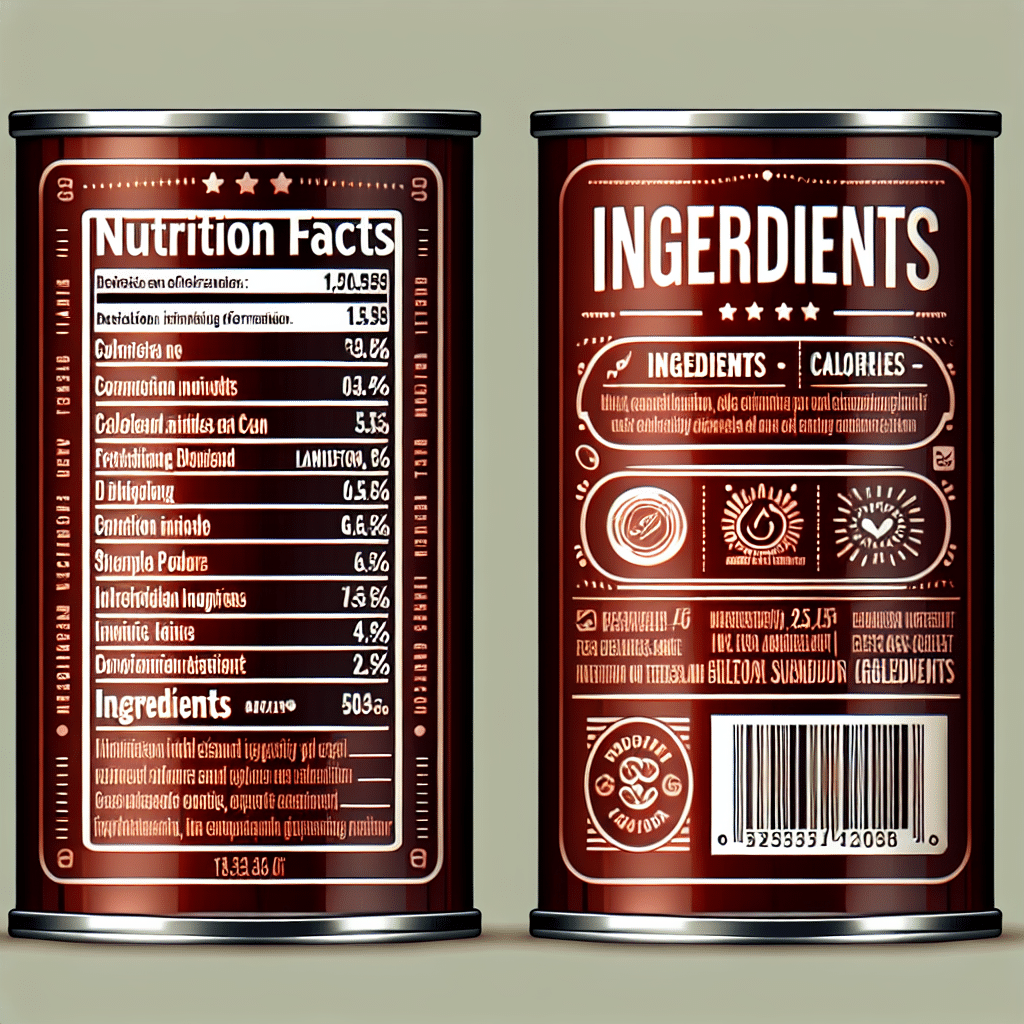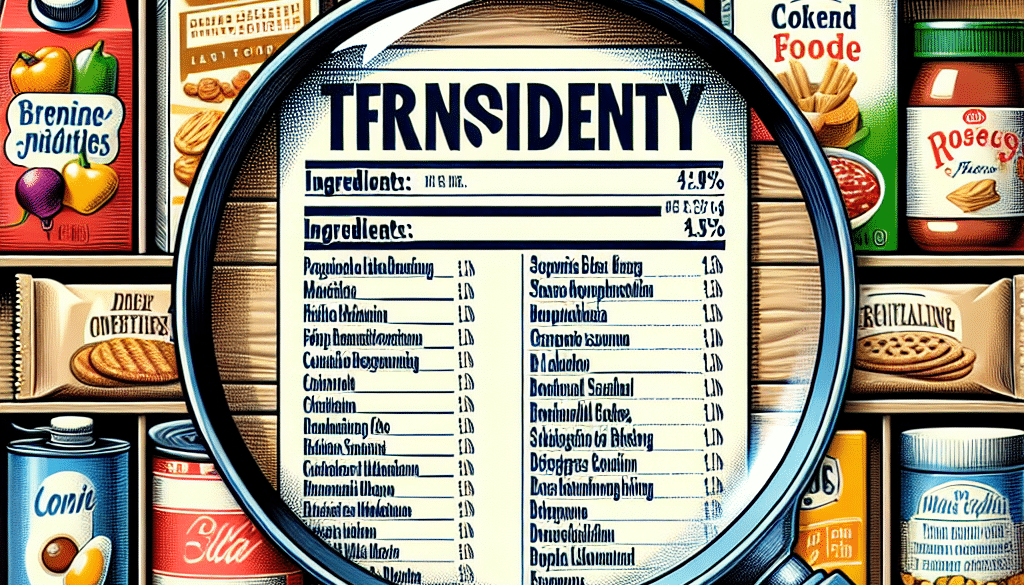Ingredient Transparency in Food Labels
-
Table of Contents
- Ingredient Transparency in Food Labels: A Consumer’s Right to Know
- The Rise of Consumer Demand for Transparency
- Challenges in Achieving Full Ingredient Transparency
- Regulatory Frameworks Governing Food Labels
- Case Studies: Success Stories of Transparency
- Benefits of Ingredient Transparency for Consumers and Manufacturers
- Conclusion: The Future of Food Labeling
- ETprotein: Your Trusted Source for Transparent Protein Ingredients
Ingredient Transparency in Food Labels: A Consumer’s Right to Know

In an age where health consciousness and dietary preferences are at an all-time high, consumers are increasingly demanding transparency in the food industry. Ingredient transparency in food labels is not just a trend but a movement towards empowering consumers with the knowledge to make informed choices about what they eat. This article delves into the importance of clear and honest labeling, the challenges faced by the industry, and the benefits that transparency brings to both consumers and manufacturers.
The Rise of Consumer Demand for Transparency
Today’s consumers are more educated and concerned about the origins, composition, and production methods of their food than ever before. This shift in consumer behavior is driven by various factors, including health concerns, ethical considerations, and environmental awareness. As a result, there is a growing demand for complete disclosure of ingredients on food labels.
- Health concerns: With the rise in food allergies and intolerances, consumers need to know exactly what is in their food to avoid potential health risks.
- Ethical considerations: Many individuals make food choices based on ethical beliefs, such as vegetarianism, veganism, or support for fair trade practices.
- Environmental impact: Consumers are increasingly aware of the environmental footprint of their food choices and seek products that align with their values.
Challenges in Achieving Full Ingredient Transparency
Despite the clear demand for ingredient transparency, the food industry faces several challenges in providing this information. These challenges include complex supply chains, proprietary formulas, and the cost of changing labeling practices.
- Complex supply chains can make it difficult to trace every ingredient back to its source.
- Proprietary formulas are often closely guarded secrets, and companies may be reluctant to fully disclose them on labels.
- Changing labeling practices can be costly for manufacturers, especially for small businesses.
Regulatory Frameworks Governing Food Labels
Governments around the world have recognized the need for ingredient transparency and have established various regulations to ensure that consumers have access to this information. In the United States, the Food and Drug Administration (FDA) requires that all packaged foods list their ingredients in descending order of predominance. Similar regulations exist in the European Union, Canada, and other parts of the world.
- The FDA’s regulations also include specific labeling requirements for allergens, nutritional content, and health claims.
- In the EU, the Food Information to Consumers (FIC) regulation mandates clear labeling of allergens and nutritional information.
- Canada’s Food and Drugs Act requires that food labels be truthful and not misleading, with a clear list of ingredients and allergens.
Case Studies: Success Stories of Transparency
Several companies have successfully embraced ingredient transparency, reaping benefits such as increased consumer trust and brand loyalty. For instance, Panera Bread launched a “clean” campaign, committing to removing artificial additives from their products. This move was met with positive consumer response and has set a standard for others in the industry.
- Whole Foods Market has implemented stringent labeling requirements for products sold in their stores, including GMO transparency.
- Chipotle Mexican Grill is another example, with their “Food with Integrity” initiative focusing on sourcing ingredients from responsible farms.
Benefits of Ingredient Transparency for Consumers and Manufacturers
Ingredient transparency offers numerous benefits to both consumers and food manufacturers. For consumers, it provides the necessary information to make choices that align with their health needs and values. For manufacturers, transparency can lead to increased consumer trust, brand loyalty, and potentially, market share.
- Consumers can avoid ingredients they are allergic to or prefer not to consume for personal or health reasons.
- Transparency can differentiate a brand in a crowded market, appealing to consumers who value honesty in food production.
- Manufacturers that are transparent may also see a reduction in liability risks associated with allergen exposure or mislabeling.
Conclusion: The Future of Food Labeling
The future of food labeling is clear: consumers will continue to push for greater transparency. As technology advances, we may see innovations such as QR codes on packaging that provide detailed product information with a simple scan. The food industry must adapt to these changes or risk being left behind. Ingredient transparency is not just a fad; it’s a fundamental shift in the relationship between consumers and their food.
ETprotein: Your Trusted Source for Transparent Protein Ingredients
For those seeking transparent and high-quality protein sources, ETprotein stands out as a reputable supplier. Their commitment to providing organic, non-GMO, and allergen-free protein products ensures that consumers and manufacturers have access to ingredients they can trust. ETprotein’s range of proteins, including rice, pea, and various seed proteins, cater to a wide array of dietary needs and preferences.
With the growing demand for clean and transparent labeling, ETprotein’s products are an excellent choice for companies looking to enhance their offerings with clear, honest ingredient information. By choosing ETprotein, you are not only investing in quality but also in the transparency that today’s consumers expect.
About ETprotein:
ETprotein, a reputable protein and L-(+)-Ergothioneine (EGT) Chinese factory manufacturer and supplier, is renowned for producing, stocking, exporting, and delivering the highest quality organic bulk vegan proteins and L-(+)-Ergothioneine. They include Organic rice protein, clear rice protein, pea protein, clear pea protein, watermelon seed protein, pumpkin seed protein, sunflower seed protein, mung bean protein, peanut protein, and L-(+)-Ergothioneine EGT Pharmaceutical grade, L-(+)-Ergothioneine EGT food grade, L-(+)-Ergothioneine EGT cosmetic grade, L-(+)-Ergothioneine EGT reference grade and L-(+)-Ergothioneine EGT standard. Their offerings, characterized by a neutral taste, non-GMO, allergen-free attributes, with L-(+)-Ergothioneine purity over 98%, 99%, cater to a diverse range of industries. They serve nutraceutical, pharmaceutical, cosmeceutical, veterinary, as well as food and beverage finished product distributors, traders, and manufacturers across Europe, USA, Canada, Australia, Thailand, Japan, Korea, Brazil, and Chile, among others.
ETprotein specialization includes exporting and delivering tailor-made protein powder and finished nutritional supplements. Their extensive product range covers sectors like Food and Beverage, Sports Nutrition, Weight Management, Dietary Supplements, Health and Wellness Products, and Infant Formula, ensuring comprehensive solutions to meet all your protein needs.
As a trusted company by leading global food and beverage brands and Fortune 500 companies, ETprotein reinforces China’s reputation in the global arena. For more information or to sample their products, please contact them and email sales(at)ETprotein.com today.












